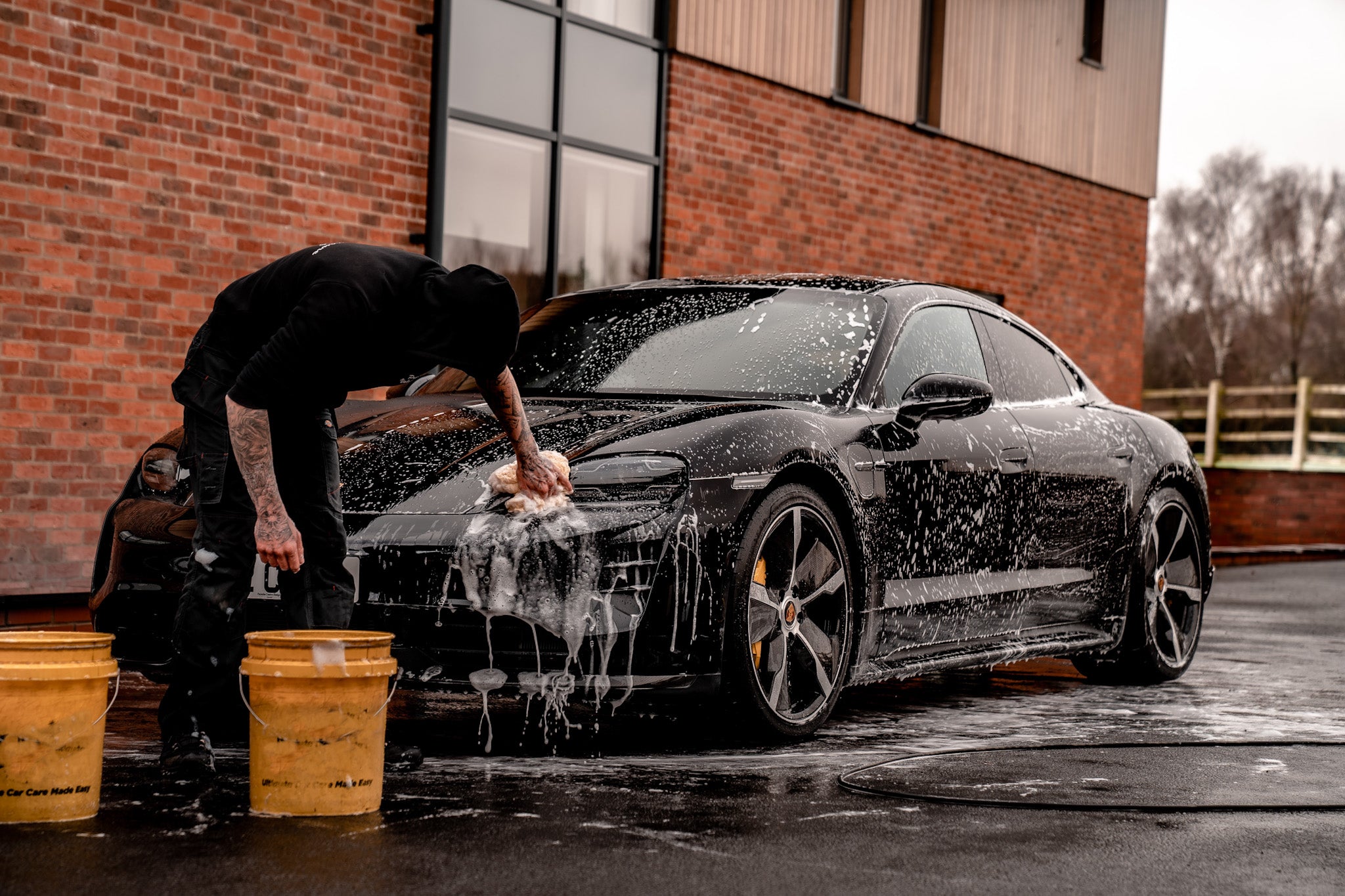Costs Ceramic Coatings San Jose for Ultimate Automobile Defense
Costs Ceramic Coatings San Jose for Ultimate Automobile Defense
Blog Article
Revealing the Scientific Research Behind Ceramic Coatings: Exactly How Does It Job and Why Is It Above Traditional Options?
Ceramic layers have been acquiring popularity in different markets for their exceptional performance and sturdiness. The scientific research behind these layers surpasses mere surface security, diving right into the detailed chemistry that makes them stand out from traditional choices (ceramic coatings san jose). Recognizing how ceramic coverings work and why they surpass conventional alternatives is essential for those seeking to enhance the longevity and strength of their products. What exactly sets ceramic coatings apart, and how do they accomplish such remarkable outcomes?
The Chemistry of Ceramic Coatings
In recognizing ceramic finishes, delving into the detailed chemistry behind their structure is essential for grasping their performance and resilience. Ceramic coatings are largely composed of silicon dioxide (SiO2), which creates a strong and safety layer when applied to numerous surfaces. This chemical framework offers phenomenal resistance to warm, chemicals, and corrosion, making ceramic coverings very searched for for a variety of applications.
The chemistry behind ceramic coverings entails the formation of covalent bonds in between silicon and oxygen atoms, creating a stiff network that enhances the layer's durability and sturdiness. Furthermore, the visibility of other aspects such as aluminum, titanium, and zirconium additional boosts the finish's buildings, offering boosted solidity and adhesion to surfaces.
Recognizing the chemical composition of ceramic finishings enables the customization of formulas to match specific requirements, whether it be for automotive, industrial, or property objectives. By utilizing the power of chemistry, ceramic finishings proceed to lead the way for premium defense and efficiency in various markets.
Advantages of Ceramic Coatings

Another considerable benefit of ceramic layers is their hydrophobic nature. This residential property triggers water to bead up and roll off the coated surface area, carrying dirt and impurities with it. Therefore, ceramic coverings make cleansing and preserving surface areas much easier and less time-consuming. Ceramic finishings offer improved gloss and tint deepness, offering surfaces a glossy and dynamic look. In general, the plethora of benefits provided by ceramic layers make them an exceptional alternative contrasted to conventional finish methods.
Exactly How Ceramic Coatings Bond
Ceramic layers bond to surfaces through a process that entails molecular attachment and chemical communications. When a ceramic coating is related to a surface, it develops a solid bond by chemically adhering to the surface at a molecular degree. This bond is developed with the development of covalent bonds, which are exceptionally strong and sturdy. The ceramic coating's molecules pass through the pores of the surface area, developing a limited grip that resists separation.
In addition, the chemical communications between the ceramic covering and the surface additionally enhance the bond. ceramic coatings san jose. These interactions enable the ceramic coating to produce a continuous and smooth layer on the surface area, offering outstanding defense and durability. Unlike typical layers that might rest on the surface without totally bonding, ceramic finishes develop a long-term bond that is resistant to chemicals, UV rays, and severe environmental problems

Fundamentally, the bonding system of ceramic coverings ensures a long-lasting and efficient protective layer that outperforms traditional layer alternatives. This remarkable bond contributes to the durability, scrape resistance, and durability of ceramic coverings, making them a recommended selection for different applications.
Sturdiness of Ceramic Coatings
The phenomenal durability of ceramic finishes comes from their robust molecular bond and chemical interactions with surface areas, guaranteeing a durable protective layer that goes beyond standard covering alternatives. Once applied, ceramic coatings develop a solid bond with the substrate, creating a durable obstacle versus different environmental stress factors such as UV radiation, chemicals, and abrasions. This bond is so protected that it can her response stand up to the roughness of day-to-day use without degrading or deteriorating promptly.
Unlike standard finishes that might degrade in time, ceramic coatings preserve their honesty for an extensive period, supplying resilient defense for the underlying surface area. The strong molecular framework of ceramic coatings withstands damaging, fading, and peeling, ensuring that the surface remains shielded and aesthetically pleasing for years to come. This toughness not just minimizes the demand for constant reapplications however likewise conserves money and time in the lengthy run. Generally, the phenomenal durability of ceramic coverings makes them an exceptional choice for securing a large range of surface areas in numerous applications.
Ceramic Coatings Vs. Conventional Choices
In contrast to conventional finishing approaches, ceramic coatings provide a distinct blend of toughness and safety capacities that set them apart in various surface security applications. Typical choices such as wax or sealants give a short-term layer Read Full Article of defense that can wear off rapidly, requiring constant reapplication. On the various other hand, ceramic layers develop a strong bond with the surface, creating a long-term or semi-permanent obstacle that is highly immune to abrasion, chemicals, UV rays, and severe temperature levels.
In addition, ceramic layers supply remarkable hydrophobic residential or commercial properties compared to traditional coatings. The hydrophobic nature of ceramic coatings creates water to grain up and roll off the surface, lugging dust and pollutants with it. This self-cleaning effect aids to preserve the surface's sanitation and gloss for extensive periods, reducing the need for regular maintenance.
Additionally, ceramic coatings have a thicker layer contrasted to standard alternatives, giving boosted scrape resistance and defense against small influences. This durability guarantees resilient performance and assists preserve the aesthetic allure of the dealt with surface for a prolonged period.
Conclusion
Finally, the science behind ceramic coatings exists in their chemical make-up and bonding properties, click making them premium to standard choices. The advantages of ceramic finishes consist of enhanced sturdiness and defense for surface areas. By recognizing exactly how ceramic coatings job and their benefits over conventional options, one can make educated decisions when considering finishing choices for different applications.
Unlike standard finishes that may sit on the surface area without fully bonding, ceramic layers produce an irreversible bond that is resistant to chemicals, UV rays, and extreme environmental conditions.
The extraordinary durability of ceramic finishings stems from their durable molecular bond and chemical interactions with surfaces, guaranteeing a resilient safety layer that surpasses traditional coating alternatives.Unlike conventional layers that may deteriorate over time, ceramic finishes keep their stability for an extended period, offering lasting security for the underlying surface area.In comparison to standard finishing methods, ceramic coverings offer an unique mix of resilience and protective capacities that set them apart in different surface security applications. By comprehending exactly how ceramic finishings work and their advantages over traditional alternatives, one can make enlightened choices when thinking about finishing choices for various applications.
Report this page